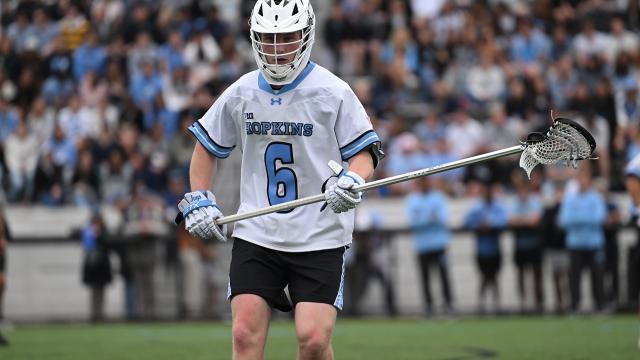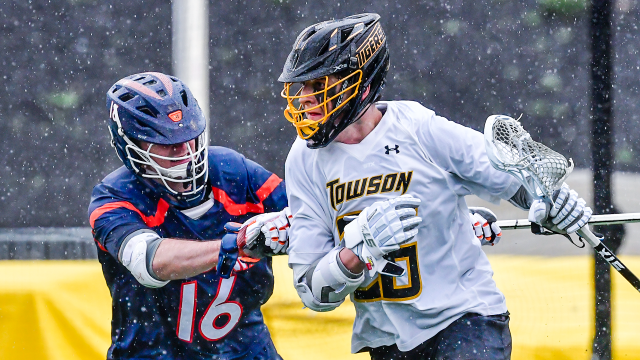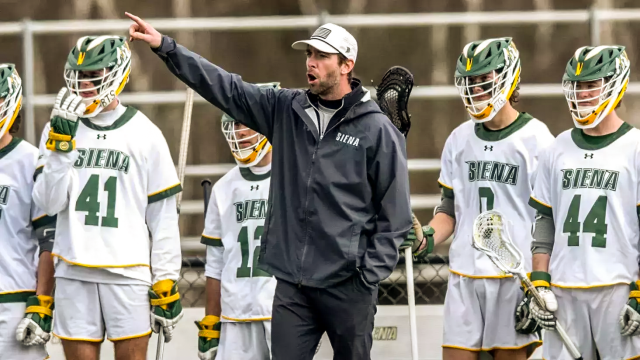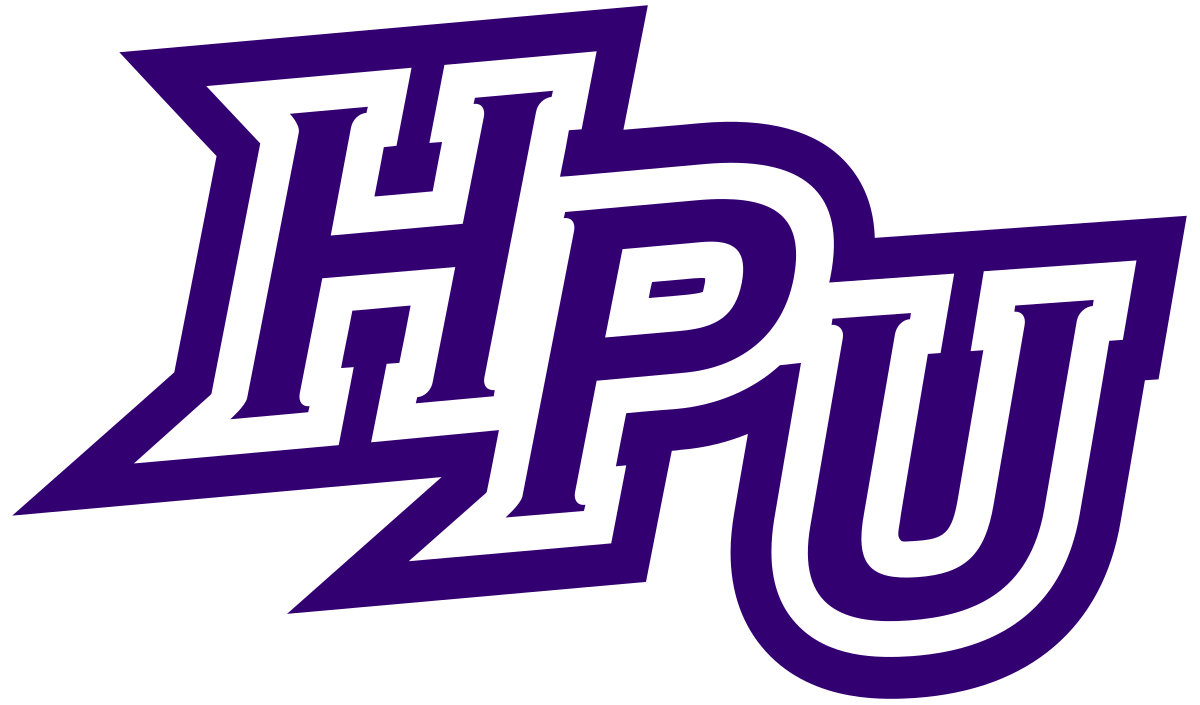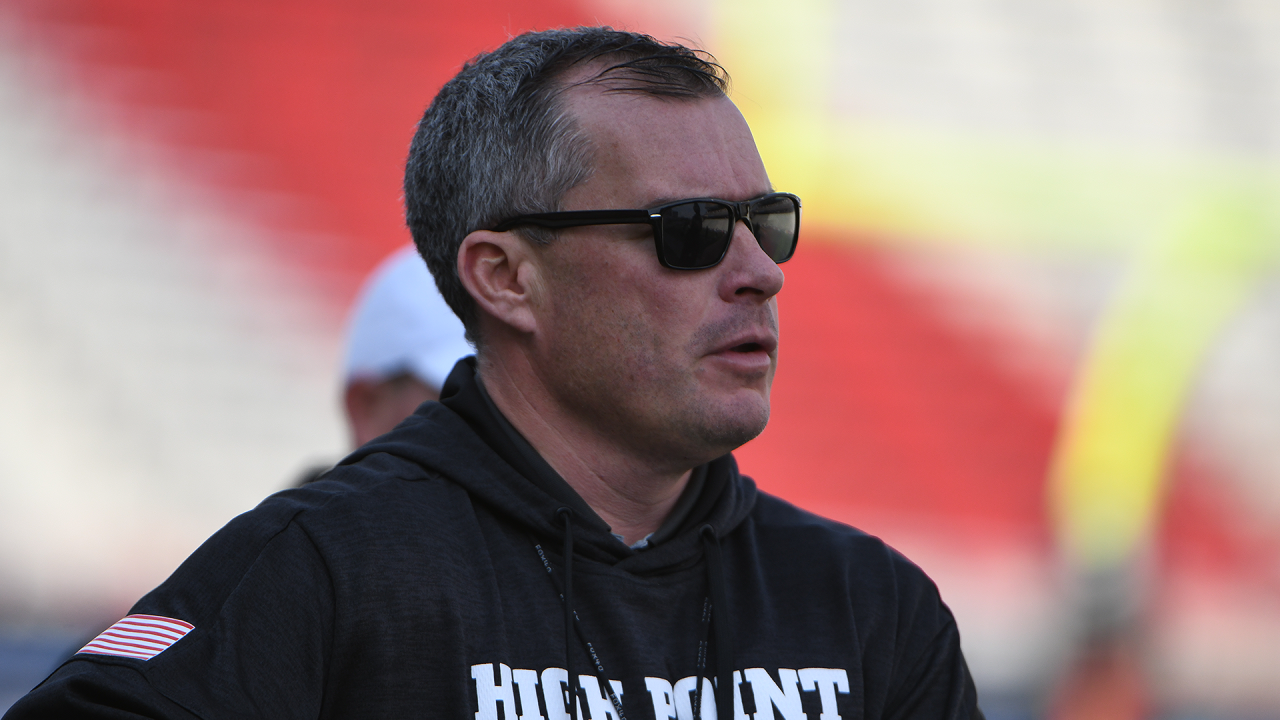
Torpey, Toomey on Unintended Consequences of Expanded Video Review
The NCAA men’s lacrosse rules committee’s decision to expand the use of video replay — in part as a response to the winning goal in Duke’s overtime defeat of Penn State in last year’s NCAA semifinals — was designed to get more calls right.
Like so many well-meaning ideas, it’s also subject to the law of unintended consequences — as the opening weekend of the season has already illustrated. The expanded replay allows coaches to toss a flag any time before the final four minutes of regulation.
New plays now eligible to be reviewed include if a loose ball crosses the goal line; if a ball is in the goal before a cage is dislodged; if an offensive player was in or landed in the crease before a goal is scored; if an offensive player landed in the goal mouth prior to a goal because of illegal defensive contact; and if a goal is scored because the head of a player’s crosse comes off during a shot.
High Point coach Jon Torpey became the first Division I coach to toss a challenge flag, doing so with the Panthers leading comfortably in the third quarter of their 14-7 victory over Mercer. He wasn’t entirely sure whether a step-down shot from a defenseman beat the horn, and the glare on the video board made it difficult to tell.
So about 15 seconds into Mercer’s ensuing possession — after it completed a clear — Torpey threw a flag and called an official over.
“It’s interesting to stop play, too, on the defensive end of the field,” Torpey said. “If you think about that late in the fourth quarter, if somebody is pushing transition. If somebody threw a challenge flag with five minutes left to go and it’s a tie game and they have transition, you can essentially stop play, which is neat.”
That’s one way of putting it. It opens the door for the coaching equivalent of a college defensive back who gets burned doing everything he can to interfere with a receiver. Sure, there will be a 15-yard penalty, but it beats giving up a touchdown.
In this case, a team might lose a timeout and its chance to challenge again in a half. But that might be a small price to pay for eliminating an unsettled situation in a tight game.
A similar play stood out to Loyola coach Charley Toomey when he reviewed video of Maryland’s victory at Richmond this week while preparing for Saturday’s game against the Terrapins. Maryland threw a challenge flag before Richmond had completed a clear, and while there was no change in a call, the Terps were able to set up their ride.
“That wasn’t the way I thought it would be adjudicated,” Toomey said. “I thought you would have to go down and once the ball was cleared or there was a stoppage or the ball was out of bounds, then they would stop it. I still think we’re working through this in a lot of different ways.”
Toomey was the first coach to successfully challenge a call, getting a Georgetown goal overturned that would have snipped Loyola’s lead to 5-4. The Greyhounds ripped off the next three goals and never allowed the Hoyas to get closer than three the rest of the way in an 18-10 victory.
It was the first time Toomey ordered a challenge, including in practices and scrimmages. Like many coaches, he was curious just how the mechanics of the process would work.
“We looked for opportunities to do it,” Toomey said. “I said, ‘This isn’t a Charley Toomey decision.’ We’re all around the iPad and saying this looks like something we’re willing to lose a timeout over.”
Torpey’s challenge wasn’t successful, but there was still plenty to learn. Many of High Point’s players had their arms raised as the official emerged from the review, only to drop them with a bit of dejection when the original call was upheld. But the reverse can also be true.
“It’s kind of like a stick check,” Torpey said. “If you call a stick check and that stick’s legal, I feel like it gives the other team so much excitement and so much, ‘We showed you. We’re beating you because we’re better.’ It’s the same with this thing.”
Replay won’t be used in every game this season — the Big Ten chose not to use it during conference play — but there’s potential for gamesmanship and hijinks in even the most basic element of its implementation: The challenge flag itself, a piece of equipment every team is technically responsible for providing for itself.
“You travel with your own hanky,” Toomey said.
HIGH POINT STARTS ON HIGH NOTE
Last year’s Atlantic 10 tournament produced two gifts for High Point coach Jon Torpey and his staff. The first — a 16-14 comeback victory over Saint Joseph’s just five days after the Panthers lost to the Hawks — was a collective effort Torpey felt was as good as any the program had produced since it debuted in 2013.
The second, a 15-8 championship game loss to Richmond, wasn’t quite so fun in real time. But it also provided incentive for High Point heading into its second year in the A-10.
“Any time you lose in the title game the previous year, it definitely gets the guys’ attention in the summer to go, ‘OK, what do we need to do to close the gap here with the team that won,’” Torpey said. “I feel like the guys had a really good offseason, and it really gave great voice and clout to the older guys telling the younger guys, ‘If we want to do this, we have to do these things better.’”
So far, so good for the Panthers, who doubled up Mercer 14-7 in their opener last weekend and welcome Duke on Saturday for an in-state showdown. Brayden Mayea had four goals and Jack VanOverbeke had a goal and three assists for High Point, which gave up the first two goals and then scored nine in a row in a span of less than 10 minutes to seize control before halftime.
“There’s a lot of early season kinks we have to fix and things we wanted to execute on that we didn’t,” Torpey said. “But the speed was there. I thought physically, the guys played hard. Execution, a little off, but in the effort-based categories, it was definitely a plus. I thought our riding game was good for the early part of the season.”
In short, High Point could be dangerous for all the reasons it normally is. With a style few opponents can replicate, the Panthers have long been a difficult matchup (especially in midweek scenarios).
This year’s bunch brought back four players with at least 30 points last season — VanOverbeke (37 goals, 41 assists), Mayea (45 goals, 17 assists), Nick Rizzo (17 goals, 16 assists) and Jack Sawyer (20 goals, 12 assists) — and each is a senior or a redshirt senior.
Defensively, High Point has plenty of experience in its rope unit, and sophomore goalie Zack Overend made nine saves against Mercer in his first career start. The Panthers also have graduate student Collin Hoben back to face off after he won 54.5 percent of his attempts last season, with sophomore Luca Accardo (50 percent) also in the rotation.
“It’s a strong group top to bottom, and I’m hoping we can stay the course and — knock on wood — stay healthy,” Torpey said. “I feel like if the guys can do that, it’s going to be a great year.”
Patrick Stevens
Patrick Stevens has covered college sports for 25 years. His work also appears in The Washington Post, Blue Ribbon College Basketball Yearbook and other outlets. He's provided coverage of Division I men's lacrosse to USA Lacrosse Magazine since 2010.

Related Articles
